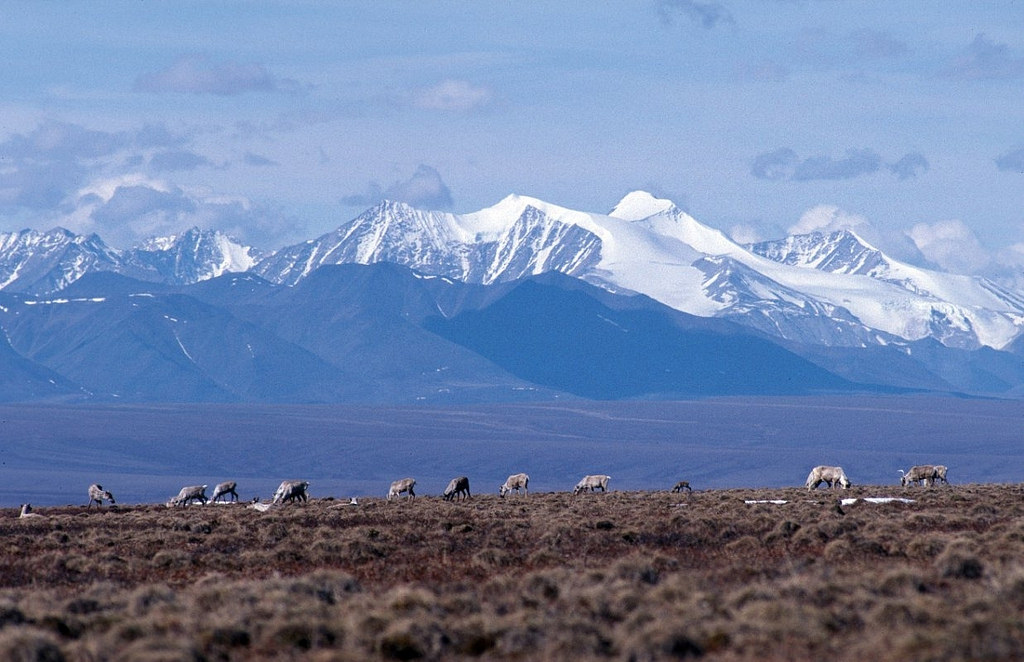How a new snow study further complicates the Trump administration’s rush to drill in Alaska’s Arctic refuge
A UAF study found a surprising lack of snow cover crucial to drilling operations. The administration's EIS didn't seem to take that possibility into account.

On his second day with the Trump administration, Alaskan Joe Balash learned he would be personally responsible for completing environmental studies and conducting an oil lease sale in the Arctic National Wildlife Refuge.
Recounting this story during a conference in Anchorage in 2018, he joked, “No pressure.”
A year and a half later, the environmental studies are incomplete and the lease sale is still in question, but the pressure is off.
Balash quit his job with the Interior Department in August to go to work for an oil company in Alaska, bailing on the project before completion of the ANWR environmental studies.
The fate of the lease sale that the Trump administration is desperate to hold this year may depend upon what legal challenges emerge to the environmental impact statement work that Balash had been leading.
His departure won’t do anything to bolster the final product or to sway critics who have charged that the process has been flawed from the start by political goals.
The quicker the lease sale happens, proponents believe, the more likely it is that the opening of ANWR to oil exploration will not be reversed by the next president, should Trump lose in 2020.
But the gaps in the scientific record in ANWR about everything from vegetation to caribou and polar bears have been repeatedly mentioned by government researchers who are not part of the oil industry cheering section. Filling in these research gaps would take time, but the political clock is ticking.
Paradoxically, the most difficult obstacle to oil leasing in ANWR remains the fast and furious approach by the Trump administration — which instead of hastening ANWR leases is giving legal ammunition to environmental groups seeking to delay development in court.
Opening ANWR to oil drilling has long been a goal of the Alaska Congressional delegation, whose members have also promised that environmental safeguards would be maintained.
The Trump track record shows otherwise.
The latest example of cutting corners is illustrated by a research failure about snow, that most basic building block and winter phenomenon in the Arctic.
A new study by scientists at the University of Alaska Fairbanks found that two-thirds of the area set aside for potential oil exploration in ANWR may not have adequate snow cover for winter vehicle use during a typical winter.
This is critical because avoiding damage to the tundra is an essential part of preserving the environment.
The ground must be frozen and have enough snow cover to protect the tundra from the impact of industrial vehicles. The portion of ANWR proposed for oil leasing is an area with high winds and relatively sparse snowfall.
The report called for a recognition that “using the same methods for snow roads and other overland travel will not achieve the same degree of protection as has been possible in those other areas. We strongly urge the adoption of modern snow technology not currently employed in those areas,” the report said.
The snow study includes information that is vital to any credible environmental impact statement.
The authors suggest that detailed maps are needed because of the low-snow conditions and “it is important to alert industry about the snow conditions so that they can begin to craft effective strategies to deal with a challenging snow cover.”
While it may seem obvious to address the simple question of whether there is enough snow in the region to support winter transportation, the draft EIS merely assumes that the answer will be yes.
The draft report says that ground operations would be allowed when the soil is solidly frozen at least a foot thick and that there is at least 9 inches of snow, or 3 inches of the water equivalent, on the ground.
The draft EIS does not say what would happen if those conditions are not met. Nor does it deal in any way with the new research that shows there is likely to be insufficient snowfall in many areas.
The absence of this information may be acceptable to the Trump administration, but it’s likely that when the final document is challenged in court, the justice system will see this for what it is — an attempt to rush ahead with a lease sale while Trump is still in office.
Dermot Cole can be reached at [email protected].
The views expressed here are the writers’ and are not necessarily endorsed by ArcticToday, which welcomes a broad range of viewpoints. To submit a piece for consideration, email commentary (at) arctictoday.com.